| Listing 1 - 10 of 16 | << page >> |
Sort by
|
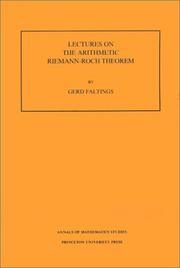
ISBN: 0691087717 0691025444 1400882478 Year: 2016 Volume: vol 127 Publisher: Princeton, NJ : Princeton University Press,
Abstract | Keywords | Export | Availability | Bookmark
 Loading...
Loading...Choose an application
- Reference Manager
- EndNote
- RefWorks (Direct export to RefWorks)
The arithmetic Riemann-Roch Theorem has been shown recently by Bismut-Gillet-Soul. The proof mixes algebra, arithmetic, and analysis. The purpose of this book is to give a concise introduction to the necessary techniques, and to present a simplified and extended version of the proof. It should enable mathematicians with a background in arithmetic algebraic geometry to understand some basic techniques in the rapidly evolving field of Arakelov-theory.
Algebraic geometry --- Algebraïsche meetkunde --- Geometry [Algebraic ] --- Géométrie algébrique --- Meetkunde [Algebraïsche ] --- Riemann-Roch theorema's --- Riemann-Roch thoerems --- Theoremes de Riemann-Roch --- Geometry, Algebraic. --- Riemann-Roch theorems. --- Theorems, Riemann-Roch --- Algebraic functions --- Geometry, Algebraic --- Geometry --- Addition. --- Adjoint. --- Alexander Grothendieck. --- Algebraic geometry. --- Analytic torsion. --- Arakelov theory. --- Asymptote. --- Asymptotic expansion. --- Asymptotic formula. --- Big O notation. --- Cartesian coordinate system. --- Characteristic class. --- Chern class. --- Chow group. --- Closed immersion. --- Codimension. --- Coherent sheaf. --- Cohomology. --- Combination. --- Commutator. --- Computation. --- Covariant derivative. --- Curvature. --- Derivative. --- Determinant. --- Diagonal. --- Differentiable manifold. --- Differential form. --- Dimension (vector space). --- Divisor. --- Domain of a function. --- Dual basis. --- E6 (mathematics). --- Eigenvalues and eigenvectors. --- Embedding. --- Endomorphism. --- Exact sequence. --- Exponential function. --- Generic point. --- Heat kernel. --- Injective function. --- Intersection theory. --- K-group. --- Levi-Civita connection. --- Line bundle. --- Linear algebra. --- Local coordinates. --- Mathematical induction. --- Morphism. --- Natural number. --- Neighbourhood (mathematics). --- Parameter. --- Projective space. --- Pullback (category theory). --- Pullback (differential geometry). --- Pullback. --- Riemannian manifold. --- Riemann–Roch theorem. --- Self-adjoint operator. --- Smoothness. --- Sobolev space. --- Stochastic calculus. --- Summation. --- Supertrace. --- Theorem. --- Transition function. --- Upper half-plane. --- Vector bundle. --- Volume form.
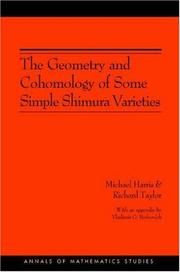
ISBN: 1400837200 9781400837205 0691090920 9780691090924 Year: 2001 Publisher: Princeton, NJ
Abstract | Keywords | Export | Availability | Bookmark
 Loading...
Loading...Choose an application
- Reference Manager
- EndNote
- RefWorks (Direct export to RefWorks)
This book aims first to prove the local Langlands conjecture for GLn over a p-adic field and, second, to identify the action of the decomposition group at a prime of bad reduction on the l-adic cohomology of the "simple" Shimura varieties. These two problems go hand in hand. The results represent a major advance in algebraic number theory, finally proving the conjecture first proposed in Langlands's 1969 Washington lecture as a non-abelian generalization of local class field theory. The local Langlands conjecture for GLn(K), where K is a p-adic field, asserts the existence of a correspondence, with certain formal properties, relating n-dimensional representations of the Galois group of K with the representation theory of the locally compact group GLn(K). This book constructs a candidate for such a local Langlands correspondence on the vanishing cycles attached to the bad reduction over the integer ring of K of a certain family of Shimura varieties. And it proves that this is roughly compatible with the global Galois correspondence realized on the cohomology of the same Shimura varieties. The local Langlands conjecture is obtained as a corollary. Certain techniques developed in this book should extend to more general Shimura varieties, providing new instances of the local Langlands conjecture. Moreover, the geometry of the special fibers is strictly analogous to that of Shimura curves and can be expected to have applications to a variety of questions in number theory.
Mathematics --- Shimura varieties. --- MATHEMATICS / Number Theory. --- Varieties, Shimura --- Arithmetical algebraic geometry --- Math --- Science --- Abelian variety. --- Absolute value. --- Algebraic group. --- Algebraically closed field. --- Artinian. --- Automorphic form. --- Base change. --- Bijection. --- Canonical map. --- Codimension. --- Coefficient. --- Cohomology. --- Compactification (mathematics). --- Conjecture. --- Corollary. --- Dimension (vector space). --- Dimension. --- Direct limit. --- Division algebra. --- Eigenvalues and eigenvectors. --- Elliptic curve. --- Embedding. --- Equivalence class. --- Equivalence of categories. --- Existence theorem. --- Field of fractions. --- Finite field. --- Function field. --- Functor. --- Galois cohomology. --- Galois group. --- Generic point. --- Geometry. --- Hasse invariant. --- Infinitesimal character. --- Integer. --- Inverse system. --- Isomorphism class. --- Lie algebra. --- Local class field theory. --- Maximal torus. --- Modular curve. --- Moduli space. --- Monic polynomial. --- P-adic number. --- Prime number. --- Profinite group. --- Residue field. --- Ring of integers. --- Separable extension. --- Sheaf (mathematics). --- Shimura variety. --- Simple group. --- Special case. --- Spectral sequence. --- Square root. --- Subset. --- Tate module. --- Theorem. --- Transcendence degree. --- Unitary group. --- Valuative criterion. --- Variable (mathematics). --- Vector space. --- Weil group. --- Weil pairing. --- Zariski topology.
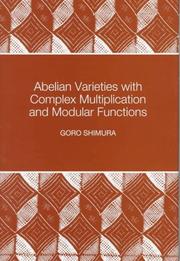
ISBN: 0691016569 1400883946 9780691016566 Year: 2016 Volume: 46 Publisher: Princeton, NJ : Princeton University Press,
Abstract | Keywords | Export | Availability | Bookmark
 Loading...
Loading...Choose an application
- Reference Manager
- EndNote
- RefWorks (Direct export to RefWorks)
Reciprocity laws of various kinds play a central role in number theory. In the easiest case, one obtains a transparent formulation by means of roots of unity, which are special values of exponential functions. A similar theory can be developed for special values of elliptic or elliptic modular functions, and is called complex multiplication of such functions. In 1900 Hilbert proposed the generalization of these as the twelfth of his famous problems. In this book, Goro Shimura provides the most comprehensive generalizations of this type by stating several reciprocity laws in terms of abelian varieties, theta functions, and modular functions of several variables, including Siegel modular functions. This subject is closely connected with the zeta function of an abelian variety, which is also covered as a main theme in the book. The third topic explored by Shimura is the various algebraic relations among the periods of abelian integrals. The investigation of such algebraicity is relatively new, but has attracted the interest of increasingly many researchers. Many of the topics discussed in this book have not been covered before. In particular, this is the first book in which the topics of various algebraic relations among the periods of abelian integrals, as well as the special values of theta and Siegel modular functions, are treated extensively.
Ordered algebraic structures --- 512.74 --- Abelian varieties --- Modular functions --- Functions, Modular --- Elliptic functions --- Group theory --- Number theory --- Varieties, Abelian --- Geometry, Algebraic --- Algebraic groups. Abelian varieties --- 512.74 Algebraic groups. Abelian varieties --- Abelian varieties. --- Modular functions. --- Abelian extension. --- Abelian group. --- Abelian variety. --- Absolute value. --- Adele ring. --- Affine space. --- Affine variety. --- Algebraic closure. --- Algebraic equation. --- Algebraic extension. --- Algebraic number field. --- Algebraic structure. --- Algebraic variety. --- Analytic manifold. --- Automorphic function. --- Automorphism. --- Big O notation. --- CM-field. --- Characteristic polynomial. --- Class field theory. --- Coefficient. --- Complete variety. --- Complex conjugate. --- Complex multiplication. --- Complex number. --- Complex torus. --- Corollary. --- Degenerate bilinear form. --- Differential form. --- Direct product. --- Direct proof. --- Discrete valuation ring. --- Divisor. --- Eigenvalues and eigenvectors. --- Embedding. --- Endomorphism. --- Existential quantification. --- Field of fractions. --- Finite field. --- Fractional ideal. --- Function (mathematics). --- Fundamental theorem. --- Galois extension. --- Galois group. --- Galois theory. --- Generic point. --- Ground field. --- Group theory. --- Groupoid. --- Hecke character. --- Homology (mathematics). --- Homomorphism. --- Identity element. --- Integer. --- Irreducibility (mathematics). --- Irreducible representation. --- Lie group. --- Linear combination. --- Linear subspace. --- Local ring. --- Modular form. --- Natural number. --- Number theory. --- Polynomial. --- Prime factor. --- Prime ideal. --- Projective space. --- Projective variety. --- Rational function. --- Rational mapping. --- Rational number. --- Real number. --- Residue field. --- Riemann hypothesis. --- Root of unity. --- Scientific notation. --- Semisimple algebra. --- Simple algebra. --- Singular value. --- Special case. --- Subgroup. --- Subring. --- Subset. --- Summation. --- Theorem. --- Vector space. --- Zero element.

ISBN: 0691082286 0691082324 1400881579 Year: 1979 Publisher: Princeton : Tokyo : Princeton University Press University of Tokyo press,
Abstract | Keywords | Export | Availability | Bookmark
 Loading...
Loading...Choose an application
- Reference Manager
- EndNote
- RefWorks (Direct export to RefWorks)
Based on a seminar sponsored by the Institute for Advanced Study in 1977-1978, this set of papers introduces micro-local analysis concisely and clearly to mathematicians with an analytical background. The papers treat the theory of microfunctions and applications such as boundary values of elliptic partial differential equations, propagation of singularities in the vicinity of degenerate characteristics, holonomic systems, Feynman integrals from the hyperfunction point of view, and harmonic analysis on Lie groups.
Mathematical analysis --- Differential geometry. Global analysis --- 517.98 --- -Advanced calculus --- Analysis (Mathematics) --- Algebra --- Functional analysis and operator theory --- Addresses, essays, lectures --- Mathematical analysis. --- Addresses, essays, lectures. --- -517.1 Mathematical analysis --- 517.98 Functional analysis and operator theory --- -Functional analysis and operator theory --- -517.98 Functional analysis and operator theory --- 517.1 Mathematical analysis --- 517.1. --- 517.1 --- Addition. --- Analytic function. --- Analytic manifold. --- Asymptotic analysis. --- Bernhard Riemann. --- Boundary value problem. --- Bounded operator. --- Cartan subgroup. --- Characterization (mathematics). --- Class function (algebra). --- Closed-form expression. --- Codimension. --- Cohomology. --- Compact space. --- Comparison theorem. --- Contact geometry. --- Continuous function. --- Continuous linear operator. --- Convex hull. --- Cotangent bundle. --- D-module. --- Degenerate bilinear form. --- Diagonal matrix. --- Differentiable manifold. --- Differential operator. --- Dimension (vector space). --- Dimension. --- Elliptic partial differential equation. --- Equation. --- Existence theorem. --- Fourier integral operator. --- Generic point. --- Group theory. --- Harmonic analysis. --- Holomorphic function. --- Holonomic. --- Homogeneous space. --- Hyperfunction. --- Hypersurface. --- Identity element. --- Irreducible representation. --- Killing form. --- Lagrangian (field theory). --- Lie algebra. --- Lie group. --- Linear differential equation. --- Locally compact space. --- Masaki Kashiwara. --- Maximal ideal. --- Monodromy. --- Natural number. --- Neighbourhood (mathematics). --- Ordinary differential equation. --- Orthogonal complement. --- Partial differential equation. --- Path integral formulation. --- Proper map. --- Pseudo-differential operator. --- Regularity theorem. --- Sigurdur Helgason (mathematician). --- Submanifold. --- Subset. --- Summation. --- Symmetric space. --- Symplectic geometry. --- Tangent cone. --- Theorem. --- Topological space. --- Vector bundle. --- Victor Guillemin. --- Weyl group. --- Analyse microlocale
Book
ISBN: 0691036810 0691036756 1400882540 9780691036755 9780691036816 Year: 1994 Volume: 133 Publisher: Princeton (N.J.): Princeton university press,
Abstract | Keywords | Export | Availability | Bookmark
 Loading...
Loading...Choose an application
- Reference Manager
- EndNote
- RefWorks (Direct export to RefWorks)
Written for advanced undergraduate and first-year graduate students, this book aims to introduce students to a serious level of p-adic analysis with important implications for number theory. The main object is the study of G-series, that is, power series y=aij=0 Ajxj with coefficients in an algebraic number field K. These series satisfy a linear differential equation Ly=0 with LIK(x) [d/dx] and have non-zero radii of convergence for each imbedding of K into the complex numbers. They have the further property that the common denominators of the first s coefficients go to infinity geometrically with the index s. After presenting a review of valuation theory and elementary p-adic analysis together with an application to the congruence zeta function, this book offers a detailed study of the p-adic properties of formal power series solutions of linear differential equations. In particular, the p-adic radii of convergence and the p-adic growth of coefficients are studied. Recent work of Christol, Bombieri, André, and Dwork is treated and augmented. The book concludes with Chudnovsky's theorem: the analytic continuation of a G -series is again a G -series. This book will be indispensable for those wishing to study the work of Bombieri and André on global relations and for the study of the arithmetic properties of solutions of ordinary differential equations.
Analyse p-adique --- H-fonction --- H-functie --- H-function --- p-adic analyse --- p-adic analysis --- H-functions --- H-functions. --- p-adic analysis. --- Analysis, p-adic --- Algebra --- Calculus --- Geometry, Algebraic --- Fox's H-function --- G-functions, Generalized --- Generalized G-functions --- Generalized Mellin-Barnes functions --- Mellin-Barnes functions, Generalized --- Hypergeometric functions --- Adjoint. --- Algebraic Method. --- Algebraic closure. --- Algebraic number field. --- Algebraic number theory. --- Algebraic variety. --- Algebraically closed field. --- Analytic continuation. --- Analytic function. --- Argument principle. --- Arithmetic. --- Automorphism. --- Bearing (navigation). --- Binomial series. --- Calculation. --- Cardinality. --- Cartesian coordinate system. --- Cauchy sequence. --- Cauchy's theorem (geometry). --- Coefficient. --- Cohomology. --- Commutative ring. --- Complete intersection. --- Complex analysis. --- Conjecture. --- Density theorem. --- Differential equation. --- Dimension (vector space). --- Direct sum. --- Discrete valuation. --- Eigenvalues and eigenvectors. --- Elliptic curve. --- Equation. --- Equivalence class. --- Estimation. --- Existential quantification. --- Exponential function. --- Exterior algebra. --- Field of fractions. --- Finite field. --- Formal power series. --- Fuchs' theorem. --- G-module. --- Galois extension. --- Galois group. --- General linear group. --- Generic point. --- Geometry. --- Hypergeometric function. --- Identity matrix. --- Inequality (mathematics). --- Intercept method. --- Irreducible element. --- Irreducible polynomial. --- Laurent series. --- Limit of a sequence. --- Linear differential equation. --- Lowest common denominator. --- Mathematical induction. --- Meromorphic function. --- Modular arithmetic. --- Module (mathematics). --- Monodromy. --- Monotonic function. --- Multiplicative group. --- Natural number. --- Newton polygon. --- Number theory. --- P-adic number. --- Parameter. --- Permutation. --- Polygon. --- Polynomial. --- Projective line. --- Q.E.D. --- Quadratic residue. --- Radius of convergence. --- Rational function. --- Rational number. --- Residue field. --- Riemann hypothesis. --- Ring of integers. --- Root of unity. --- Separable polynomial. --- Sequence. --- Siegel's lemma. --- Special case. --- Square root. --- Subring. --- Subset. --- Summation. --- Theorem. --- Topology of uniform convergence. --- Transpose. --- Triangle inequality. --- Unipotent. --- Valuation ring. --- Weil conjecture. --- Wronskian. --- Y-intercept.
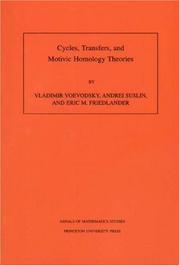
ISBN: 0691048142 0691048150 9786613379825 1283379821 140083712X 9780691048147 9780691048154 Year: 2011 Volume: 143 Publisher: Princeton, NJ : Princeton University Press,
Abstract | Keywords | Export | Availability | Bookmark
 Loading...
Loading...Choose an application
- Reference Manager
- EndNote
- RefWorks (Direct export to RefWorks)
The original goal that ultimately led to this volume was the construction of "motivic cohomology theory," whose existence was conjectured by A. Beilinson and S. Lichtenbaum. This is achieved in the book's fourth paper, using results of the other papers whose additional role is to contribute to our understanding of various properties of algebraic cycles. The material presented provides the foundations for the recent proof of the celebrated "Milnor Conjecture" by Vladimir Voevodsky. The theory of sheaves of relative cycles is developed in the first paper of this volume. The theory of presheaves with transfers and more specifically homotopy invariant presheaves with transfers is the main theme of the second paper. The Friedlander-Lawson moving lemma for families of algebraic cycles appears in the third paper in which a bivariant theory called bivariant cycle cohomology is constructed. The fifth and last paper in the volume gives a proof of the fact that bivariant cycle cohomology groups are canonically isomorphic (in appropriate cases) to Bloch's higher Chow groups, thereby providing a link between the authors' theory and Bloch's original approach to motivic (co-)homology.
Bundeltheorie --- Cohomology [Sheaf ] --- Faisceaux [Théorie des ] --- Sheaf cohomology --- Sheaf theory --- Sheaves (Algebraic topology) --- Sheaves [Theory of ] --- Théorie des faisceaux --- Algebraic cycles --- Homology theory --- Algebraic cycles. --- Homology theory. --- Cohomology theory --- Contrahomology theory --- Algebraic topology --- Cycles, Algebraic --- Geometry, Algebraic --- Abelian category. --- Abelian group. --- Addition. --- Additive category. --- Adjoint functors. --- Affine space. --- Affine variety. --- Alexander Grothendieck. --- Algebraic K-theory. --- Algebraic cycle. --- Algebraically closed field. --- Andrei Suslin. --- Associative property. --- Base change. --- Category of abelian groups. --- Chain complex. --- Chow group. --- Closed immersion. --- Codimension. --- Coefficient. --- Cohomology. --- Cokernel. --- Commutative property. --- Commutative ring. --- Compactification (mathematics). --- Comparison theorem. --- Computation. --- Connected component (graph theory). --- Connected space. --- Corollary. --- Diagram (category theory). --- Dimension. --- Discrete valuation ring. --- Disjoint union. --- Divisor. --- Embedding. --- Endomorphism. --- Epimorphism. --- Exact sequence. --- Existential quantification. --- Field of fractions. --- Functor. --- Generic point. --- Geometry. --- Grothendieck topology. --- Homeomorphism. --- Homogeneous coordinates. --- Homology (mathematics). --- Homomorphism. --- Homotopy category. --- Homotopy. --- Injective sheaf. --- Irreducible component. --- K-theory. --- Mathematical induction. --- Mayer–Vietoris sequence. --- Milnor K-theory. --- Monoid. --- Monoidal category. --- Monomorphism. --- Morphism of schemes. --- Morphism. --- Motivic cohomology. --- Natural transformation. --- Nisnevich topology. --- Noetherian. --- Open set. --- Pairing. --- Perfect field. --- Permutation. --- Picard group. --- Presheaf (category theory). --- Projective space. --- Projective variety. --- Proper morphism. --- Quasi-projective variety. --- Residue field. --- Resolution of singularities. --- Scientific notation. --- Sheaf (mathematics). --- Simplicial complex. --- Simplicial set. --- Singular homology. --- Smooth scheme. --- Spectral sequence. --- Subcategory. --- Subgroup. --- Summation. --- Support (mathematics). --- Tensor product. --- Theorem. --- Topology. --- Triangulated category. --- Type theory. --- Universal coefficient theorem. --- Variable (mathematics). --- Vector bundle. --- Vladimir Voevodsky. --- Zariski topology. --- Zariski's main theorem. --- 512.73 --- 512.73 Cohomology theory of algebraic varieties and schemes --- Cohomology theory of algebraic varieties and schemes
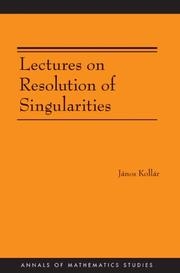
ISBN: 0691129231 0691129223 9786612157745 1282157744 1400827809 9781400827800 9780691129228 9780691129235 Year: 2009 Publisher: Princeton, NJ
Abstract | Keywords | Export | Availability | Bookmark
 Loading...
Loading...Choose an application
- Reference Manager
- EndNote
- RefWorks (Direct export to RefWorks)
Resolution of singularities is a powerful and frequently used tool in algebraic geometry. In this book, János Kollár provides a comprehensive treatment of the characteristic 0 case. He describes more than a dozen proofs for curves, many based on the original papers of Newton, Riemann, and Noether. Kollár goes back to the original sources and presents them in a modern context. He addresses three methods for surfaces, and gives a self-contained and entirely elementary proof of a strong and functorial resolution in all dimensions. Based on a series of lectures at Princeton University and written in an informal yet lucid style, this book is aimed at readers who are interested in both the historical roots of the modern methods and in a simple and transparent proof of this important theorem.
Singularities (Mathematics) --- 512.761 --- Geometry, Algebraic --- Singularities. Singular points of algebraic varieties --- 512.761 Singularities. Singular points of algebraic varieties --- Adjunction formula. --- Algebraic closure. --- Algebraic geometry. --- Algebraic space. --- Algebraic surface. --- Algebraic variety. --- Approximation. --- Asymptotic analysis. --- Automorphism. --- Bernhard Riemann. --- Big O notation. --- Birational geometry. --- C0. --- Canonical singularity. --- Codimension. --- Cohomology. --- Commutative algebra. --- Complex analysis. --- Complex manifold. --- Computability. --- Continuous function. --- Coordinate system. --- Diagram (category theory). --- Differential geometry of surfaces. --- Dimension. --- Divisor. --- Du Val singularity. --- Dual graph. --- Embedding. --- Equation. --- Equivalence relation. --- Euclidean algorithm. --- Factorization. --- Functor. --- General position. --- Generic point. --- Geometric genus. --- Geometry. --- Hyperplane. --- Hypersurface. --- Integral domain. --- Intersection (set theory). --- Intersection number (graph theory). --- Intersection theory. --- Irreducible component. --- Isolated singularity. --- Laurent series. --- Line bundle. --- Linear space (geometry). --- Linear subspace. --- Mathematical induction. --- Mathematics. --- Maximal ideal. --- Morphism. --- Newton polygon. --- Noetherian ring. --- Noetherian. --- Open problem. --- Open set. --- P-adic number. --- Pairwise. --- Parametric equation. --- Partial derivative. --- Plane curve. --- Polynomial. --- Power series. --- Principal ideal. --- Principalization (algebra). --- Projective space. --- Projective variety. --- Proper morphism. --- Puiseux series. --- Quasi-projective variety. --- Rational function. --- Regular local ring. --- Resolution of singularities. --- Riemann surface. --- Ring theory. --- Ruler. --- Scientific notation. --- Sheaf (mathematics). --- Singularity theory. --- Smooth morphism. --- Smoothness. --- Special case. --- Subring. --- Summation. --- Surjective function. --- Tangent cone. --- Tangent space. --- Tangent. --- Taylor series. --- Theorem. --- Topology. --- Toric variety. --- Transversal (geometry). --- Variable (mathematics). --- Weierstrass preparation theorem. --- Weierstrass theorem. --- Zero set. --- Differential geometry. Global analysis
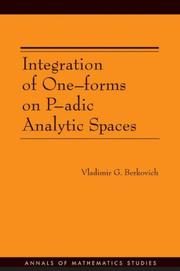
ISBN: 0691128626 1299133339 1400837154 0691127417 9781400837151 9780691127415 9780691128627 9781299133334 Year: 2006 Volume: no. 162 Publisher: Princeton, NJ
Abstract | Keywords | Export | Availability | Bookmark
 Loading...
Loading...Choose an application
- Reference Manager
- EndNote
- RefWorks (Direct export to RefWorks)
Among the many differences between classical and p-adic objects, those related to differential equations occupy a special place. For example, a closed p-adic analytic one-form defined on a simply-connected domain does not necessarily have a primitive in the class of analytic functions. In the early 1980s, Robert Coleman discovered a way to construct primitives of analytic one-forms on certain smooth p-adic analytic curves in a bigger class of functions. Since then, there have been several attempts to generalize his ideas to smooth p-adic analytic spaces of higher dimension, but the spaces considered were invariably associated with algebraic varieties. This book aims to show that every smooth p-adic analytic space is provided with a sheaf of functions that includes all analytic ones and satisfies a uniqueness property. It also contains local primitives of all closed one-forms with coefficients in the sheaf that, in the case considered by Coleman, coincide with those he constructed. In consequence, one constructs a parallel transport of local solutions of a unipotent differential equation and an integral of a closed one-form along a path so that both depend nontrivially on the homotopy class of the path. Both the author's previous results on geometric properties of smooth p-adic analytic spaces and the theory of isocrystals are further developed in this book, which is aimed at graduate students and mathematicians working in the areas of non-Archimedean analytic geometry, number theory, and algebraic geometry.
p-adic analysis. --- Analysis, p-adic --- Algebra --- Calculus --- Geometry, Algebraic --- Abelian category. --- Acting in. --- Addition. --- Aisle. --- Algebraic closure. --- Algebraic curve. --- Algebraic structure. --- Algebraic variety. --- Allegory (category theory). --- Analytic function. --- Analytic geometry. --- Analytic space. --- Archimedean property. --- Arithmetic. --- Banach algebra. --- Bertolt Brecht. --- Buttress. --- Centrality. --- Clerestory. --- Commutative diagram. --- Commutative property. --- Complex analysis. --- Contradiction. --- Corollary. --- Cosmetics. --- De Rham cohomology. --- Determinant. --- Diameter. --- Differential form. --- Dimension (vector space). --- Divisor. --- Elaboration. --- Embellishment. --- Equanimity. --- Equivalence class (music). --- Existential quantification. --- Facet (geometry). --- Femininity. --- Finite morphism. --- Formal scheme. --- Fred Astaire. --- Functor. --- Gavel. --- Generic point. --- Geometry. --- Gothic architecture. --- Homomorphism. --- Hypothesis. --- Imagery. --- Injective function. --- Irreducible component. --- Iterated integral. --- Linear combination. --- Logarithm. --- Marni Nixon. --- Masculinity. --- Mathematical induction. --- Mathematics. --- Mestizo. --- Metaphor. --- Morphism. --- Natural number. --- Neighbourhood (mathematics). --- Neuroticism. --- Noetherian. --- Notation. --- One-form. --- Open set. --- P-adic Hodge theory. --- P-adic number. --- Parallel transport. --- Patrick Swayze. --- Phrenology. --- Politics. --- Polynomial. --- Prediction. --- Proportion (architecture). --- Pullback. --- Purely inseparable extension. --- Reims. --- Requirement. --- Residue field. --- Rhomboid. --- Roland Barthes. --- Satire. --- Self-sufficiency. --- Separable extension. --- Sheaf (mathematics). --- Shuffle algebra. --- Subgroup. --- Suggestion. --- Technology. --- Tensor product. --- Theorem. --- Transept. --- Triforium. --- Tubular neighborhood. --- Underpinning. --- Writing. --- Zariski topology.

ISBN: 0691120439 0691120447 1299133258 1400837170 9780691120430 9781400837175 9780691120447 Year: 2004 Volume: no. 157 Publisher: Princeton, NJ
Abstract | Keywords | Export | Availability | Bookmark
 Loading...
Loading...Choose an application
- Reference Manager
- EndNote
- RefWorks (Direct export to RefWorks)
In recent years, considerable progress has been made in studying algebraic cycles using infinitesimal methods. These methods have usually been applied to Hodge-theoretic constructions such as the cycle class and the Abel-Jacobi map. Substantial advances have also occurred in the infinitesimal theory for subvarieties of a given smooth variety, centered around the normal bundle and the obstructions coming from the normal bundle's first cohomology group. Here, Mark Green and Phillip Griffiths set forth the initial stages of an infinitesimal theory for algebraic cycles. The book aims in part to understand the geometric basis and the limitations of Spencer Bloch's beautiful formula for the tangent space to Chow groups. Bloch's formula is motivated by algebraic K-theory and involves differentials over Q. The theory developed here is characterized by the appearance of arithmetic considerations even in the local infinitesimal theory of algebraic cycles. The map from the tangent space to the Hilbert scheme to the tangent space to algebraic cycles passes through a variant of an interesting construction in commutative algebra due to Angéniol and Lejeune-Jalabert. The link between the theory given here and Bloch's formula arises from an interpretation of the Cousin flasque resolution of differentials over Q as the tangent sequence to the Gersten resolution in algebraic K-theory. The case of 0-cycles on a surface is used for illustrative purposes to avoid undue technical complications.
512.73 --- Cohomology theory of algebraic varieties and schemes --- 512.73 Cohomology theory of algebraic varieties and schemes --- Algebraic cycles. --- Hodge theory. --- Geometry, Algebraic. --- Algebraic geometry --- Geometry --- Complex manifolds --- Differentiable manifolds --- Geometry, Algebraic --- Homology theory --- Cycles, Algebraic --- Algebraic cycles --- Hodge theory --- Addition. --- Algebraic K-theory. --- Algebraic character. --- Algebraic curve. --- Algebraic cycle. --- Algebraic function. --- Algebraic geometry. --- Algebraic number. --- Algebraic surface. --- Algebraic variety. --- Analytic function. --- Approximation. --- Arithmetic. --- Chow group. --- Codimension. --- Coefficient. --- Coherent sheaf cohomology. --- Coherent sheaf. --- Cohomology. --- Cokernel. --- Combination. --- Compass-and-straightedge construction. --- Complex geometry. --- Complex number. --- Computable function. --- Conjecture. --- Coordinate system. --- Coprime integers. --- Corollary. --- Cotangent bundle. --- Diagram (category theory). --- Differential equation. --- Differential form. --- Differential geometry of surfaces. --- Dimension (vector space). --- Dimension. --- Divisor. --- Duality (mathematics). --- Elliptic function. --- Embedding. --- Equation. --- Equivalence class. --- Equivalence relation. --- Exact sequence. --- Existence theorem. --- Existential quantification. --- Fermat's theorem. --- Formal proof. --- Fourier. --- Free group. --- Functional equation. --- Generic point. --- Geometry. --- Group homomorphism. --- Hereditary property. --- Hilbert scheme. --- Homomorphism. --- Injective function. --- Integer. --- Integral curve. --- K-group. --- K-theory. --- Linear combination. --- Mathematics. --- Moduli (physics). --- Moduli space. --- Multivector. --- Natural number. --- Natural transformation. --- Neighbourhood (mathematics). --- Open problem. --- Parameter. --- Polynomial ring. --- Principal part. --- Projective variety. --- Quantity. --- Rational function. --- Rational mapping. --- Reciprocity law. --- Regular map (graph theory). --- Residue theorem. --- Root of unity. --- Scientific notation. --- Sheaf (mathematics). --- Smoothness. --- Statistical significance. --- Subgroup. --- Summation. --- Tangent space. --- Tangent vector. --- Tangent. --- Terminology. --- Tetrahedron. --- Theorem. --- Transcendental function. --- Transcendental number. --- Uniqueness theorem. --- Vector field. --- Vector space. --- Zariski topology.
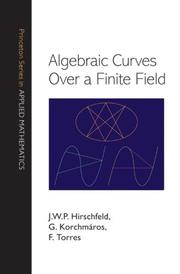
ISBN: 1400847419 9781400847419 1306988608 9781306988605 9781400847426 1400847427 0691096791 9780691096797 9780691096797 Year: 2013 Publisher: Princeton, NJ
Abstract | Keywords | Export | Availability | Bookmark
 Loading...
Loading...Choose an application
- Reference Manager
- EndNote
- RefWorks (Direct export to RefWorks)
This book provides an accessible and self-contained introduction to the theory of algebraic curves over a finite field, a subject that has been of fundamental importance to mathematics for many years and that has essential applications in areas such as finite geometry, number theory, error-correcting codes, and cryptology. Unlike other books, this one emphasizes the algebraic geometry rather than the function field approach to algebraic curves. The authors begin by developing the general theory of curves over any field, highlighting peculiarities occurring for positive characteristic and requiring of the reader only basic knowledge of algebra and geometry. The special properties that a curve over a finite field can have are then discussed. The geometrical theory of linear series is used to find estimates for the number of rational points on a curve, following the theory of Stöhr and Voloch. The approach of Hasse and Weil via zeta functions is explained, and then attention turns to more advanced results: a state-of-the-art introduction to maximal curves over finite fields is provided; a comprehensive account is given of the automorphism group of a curve; and some applications to coding theory and finite geometry are described. The book includes many examples and exercises. It is an indispensable resource for researchers and the ideal textbook for graduate students.
Curves, Algebraic. --- Finite fields (Algebra) --- Modular fields (Algebra) --- Algebra, Abstract --- Algebraic fields --- Galois theory --- Modules (Algebra) --- Algebraic curves --- Algebraic varieties --- Abelian group. --- Abelian variety. --- Affine plane. --- Affine space. --- Affine variety. --- Algebraic closure. --- Algebraic curve. --- Algebraic equation. --- Algebraic extension. --- Algebraic function. --- Algebraic geometry. --- Algebraic integer. --- Algebraic number field. --- Algebraic number theory. --- Algebraic number. --- Algebraic variety. --- Algebraically closed field. --- Applied mathematics. --- Automorphism. --- Birational invariant. --- Characteristic exponent. --- Classification theorem. --- Clifford's theorem. --- Combinatorics. --- Complex number. --- Computation. --- Cyclic group. --- Cyclotomic polynomial. --- Degeneracy (mathematics). --- Degenerate conic. --- Divisor (algebraic geometry). --- Divisor. --- Dual curve. --- Dual space. --- Elliptic curve. --- Equation. --- Fermat curve. --- Finite field. --- Finite geometry. --- Finite group. --- Formal power series. --- Function (mathematics). --- Function field. --- Fundamental theorem. --- Galois extension. --- Galois theory. --- Gauss map. --- General position. --- Generic point. --- Geometry. --- Homogeneous polynomial. --- Hurwitz's theorem. --- Hyperelliptic curve. --- Hyperplane. --- Identity matrix. --- Inequality (mathematics). --- Intersection number (graph theory). --- Intersection number. --- J-invariant. --- Line at infinity. --- Linear algebra. --- Linear map. --- Mathematical induction. --- Mathematics. --- Menelaus' theorem. --- Modular curve. --- Natural number. --- Number theory. --- Parity (mathematics). --- Permutation group. --- Plane curve. --- Point at infinity. --- Polar curve. --- Polygon. --- Polynomial. --- Power series. --- Prime number. --- Projective plane. --- Projective space. --- Quadratic transformation. --- Quadric. --- Resolution of singularities. --- Riemann hypothesis. --- Scalar multiplication. --- Scientific notation. --- Separable extension. --- Separable polynomial. --- Sign (mathematics). --- Singular point of a curve. --- Special case. --- Subgroup. --- Sylow theorems. --- System of linear equations. --- Tangent. --- Theorem. --- Transcendence degree. --- Upper and lower bounds. --- Valuation ring. --- Variable (mathematics). --- Vector space.
| Listing 1 - 10 of 16 | << page >> |
Sort by
|

 Search
Search Feedback
Feedback About UniCat
About UniCat  Help
Help News
News